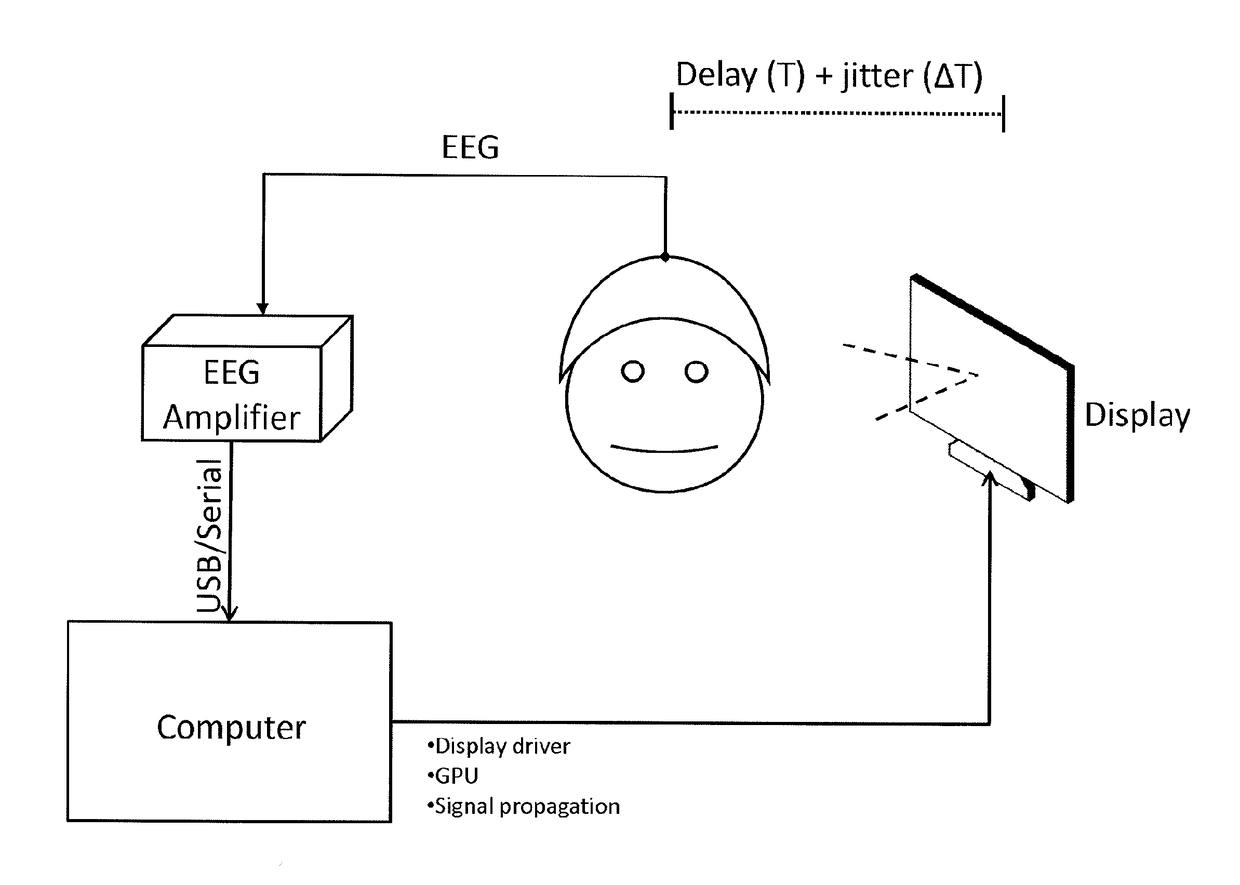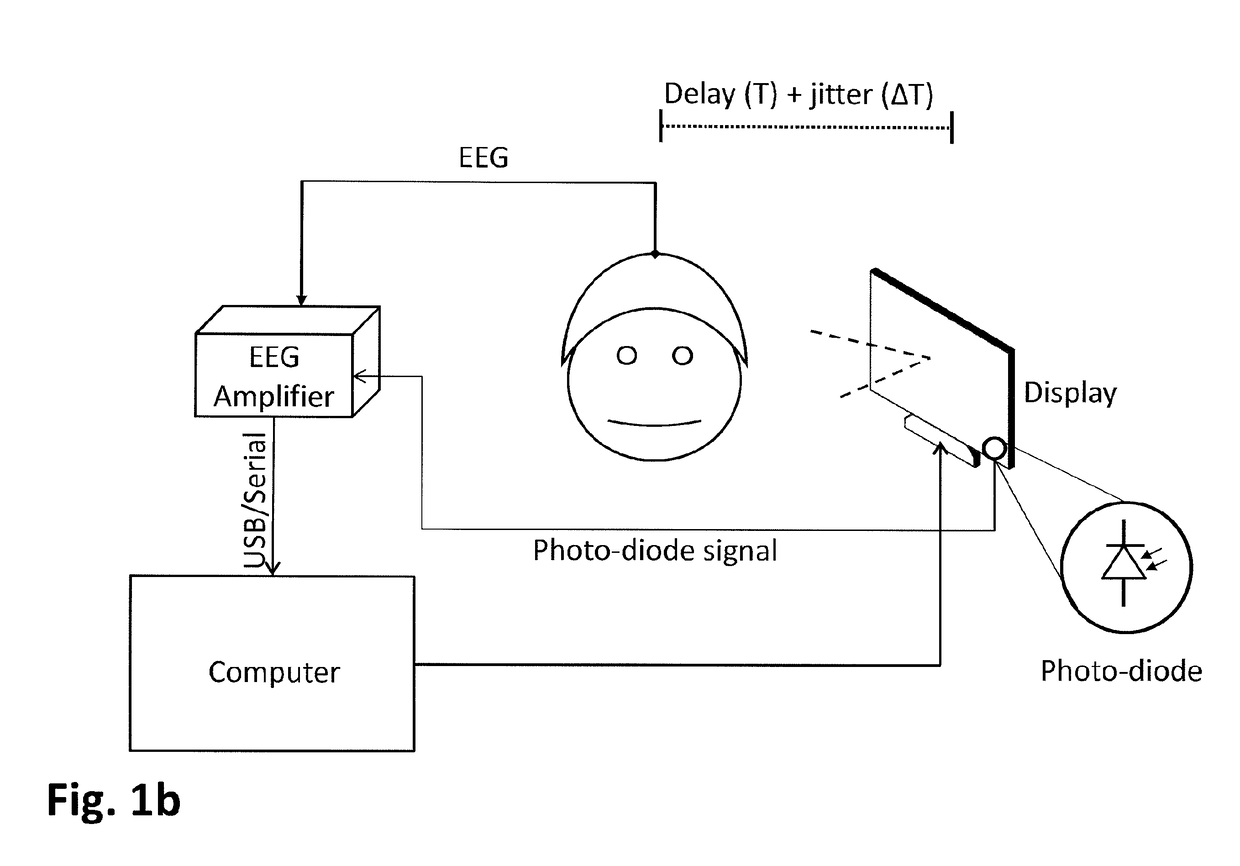Brain activity measurement and feedback system
a technology of brain activity and feedback system, which is applied in the field of headmounted devices, can solve the problems of not being able to adapt to diagnosis or treatment, presenting a risk to the patent, and being difficult to wear, and achieves the effect of convenient and comfortable wear and simple us
- Summary
- Abstract
- Description
- Claims
- Application Information
AI Technical Summary
Benefits of technology
Problems solved by technology
Method used
Image
Examples
example 2
ain-Computer Interface with Virtual Reality Feedback with Head-Mounted Display, Robotic System and Functional Electrical Stimulation
[0197]Objective:
[0198]To provide optimal training for patients with upper movements movement deficits resulting from neurological problems (e.g., ALS, stroke, brain injury, locked-in syndrome, Parkinson disease etc.). These patients would require training to reintegrate the lost / degraded movement function. A system that reads their intention to make a functional movement and provide an assistance in completing the movement could enhance the rehabilitation outcome.
[0199]For this purpose, the system could exploit Hebbian learning in associating brain's input and output areas in reintegrating the lost movement function. The Hebbian principle is “Any two systems of cells in the brain that are repeatedly active at the same time will tend to become ‘associated’, so that activity in one facilitates activity in the other.”
[0200]In the present example, the two s...
example 3
puter Interface and Motion Data Activated Neural Stimulation with Augmented Reality Feedback
[0237]Objective
[0238]A system could provide precise neural stimulation in relation to the actions performed by a patient in real world, resulting in reinforcement of neural patterns for intended behaviors.
[0239]Description
[0240]Actions of the user and that of a second person and objects in the scene are captured with a camera system for behavioral analysis. Additionally neural data is recorded with one of of the modalities (EEG, ECOG etc.) are synchronized with IMU data. The video captured from the camera system is interleaved with virtual objects to generate 3D augmented reality feedback and provided to the user though head-mounted display. Finally, appropriate neural stimulation parameters are generated in the control system and sent to the neural stimulation.
[0241]For delay and jitter between user's behavioral and physiological measures and neural stimulation should be optimized for effect...
PUM
 Login to View More
Login to View More Abstract
Description
Claims
Application Information
 Login to View More
Login to View More - R&D
- Intellectual Property
- Life Sciences
- Materials
- Tech Scout
- Unparalleled Data Quality
- Higher Quality Content
- 60% Fewer Hallucinations
Browse by: Latest US Patents, China's latest patents, Technical Efficacy Thesaurus, Application Domain, Technology Topic, Popular Technical Reports.
© 2025 PatSnap. All rights reserved.Legal|Privacy policy|Modern Slavery Act Transparency Statement|Sitemap|About US| Contact US: help@patsnap.com



